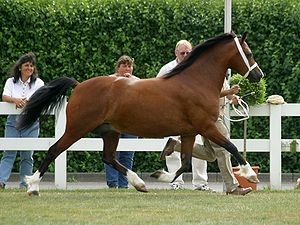Type the name of the breed you're looking for below
[wpdreams_ajaxsearchlite] Don't see the breed your're looking for? Click here and let us know!
Danish Sport pony
| Country Of Origin | Denmark |
| History and Background | The Danish Sport Pony has only been the focus of serious work in Denmark for the past 30 years. This was mainly due to the fact that the Icelandic and Norwegian horses were more popular as mounts for children. When pony riding rose in popularity, however, the demand for ponies increased as well. To cope with the demand, the Danish Sport Pony Breeding Association was formed in 1976. The organization was dedicated to creating a uniform breed of riding ponies, and this they achieved by crossing different breeds with the Danish Sport Pony. The horses that are used for breeding the Danish Sport Pony include Connemara horses, New Forest horses, Welsh stallions, and especially Arab horses. |
| Use Today | Pleasure pony, Show pony, Competition pony |
| Height | 12.2 and 14 hands (50 and 56 inches, 127 and 142 cm) |
| Colour | Bay, Black, Chestnut, Grey |
| Characteristics | The Danish Sport Pony should never be taller than 14.2 hands high (56.8 inches, 144.3 centimeters). However, the riding classes for Danish Sport ponies are separated into three categories: category 1, ponies up 14.2 hands; category 2, ponies up to 13.2 hands; and category 3, ponies up to 12.2 hands. The ideal Danish has muscular limbs, giving it both agility and speed. It should also have a well-formed head and neck, sloping shoulders, and prominent withers. Its back, meanwhile, should be muscular, as should its thighs. Traditionally, the predominant colour was dappled gray, but over time, and as crossbreeding efforts increased, Danish Sport Ponies were seen in bay, chestnut, and especially black. |
| Personality and Temperament | Since the Danish Sport Pony is designed to be used as a mount for children, it should have a good temperament; it should be calm and obedient. Breeders usually select horses with these traits for breeding purposes so that the same traits can be passed on to their offspring. |



